8 Most Interesting Pug Training Tips To Master
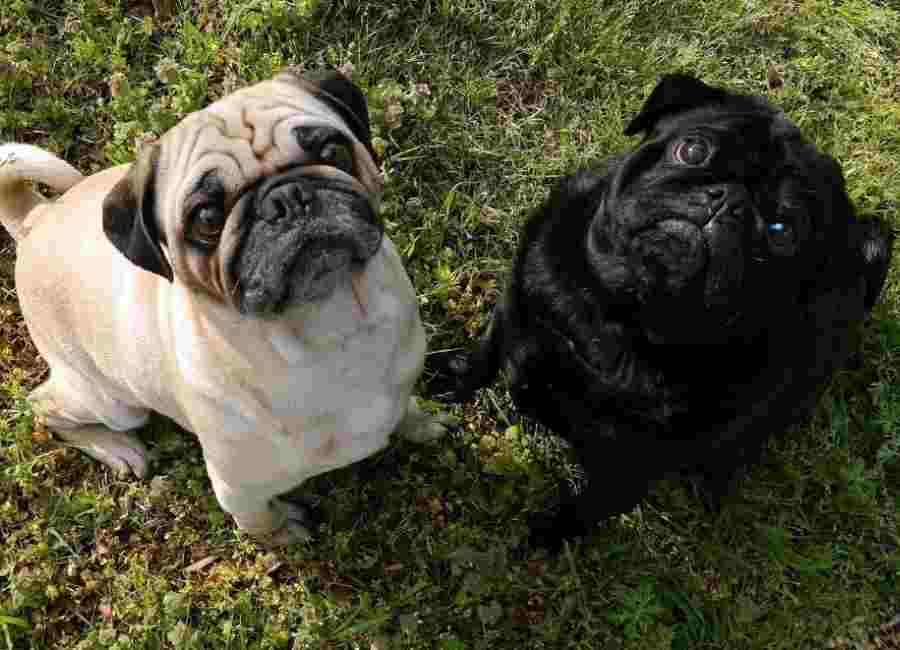
Pug training can be a bit of a challenge, but with the right approach and a bit of patience, you can easily turn your pug into a well-behaved and obedient companion.
Are you the proud owner of an adorable pug but feeling a bit lost when it comes to training? Don’t worry, you’re not alone!
Whether you’re dealing with potty training or teaching basic commands, we’ve got you covered. So, let’s dive in and make your pug the best-behaved pooch on the block!
Benefits of Proper Training for Pugs
Here are some common benefits of training for pugs:
- Learn good behavior and manners
- Improve their social skills and interact better with other dogs and people
- Increase their physical and mental stimulation
- Build a stronger bond with their owners
- Improve their overall quality of life
- Reduce the risk of behavioral issues developing in the future
- Potentially even save their lives in emergency situations, such as through basic obedience training.
Pug Training Tips
The following are some basic pug training tips you should know:
1. Teaching a Pug its name
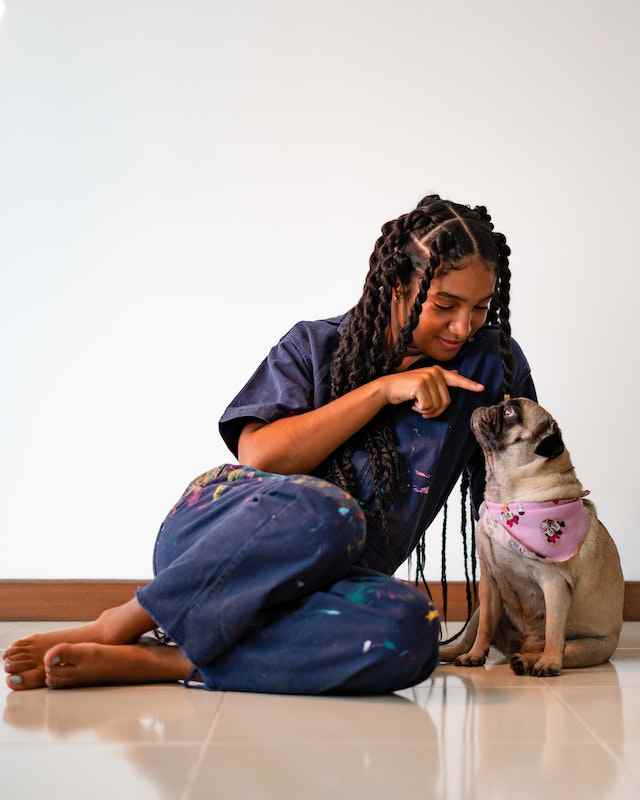
Teaching a pug its name is a crucial first step in building a strong bond and relationship with your furry friend. Here are the steps to follow when teaching your pug its name.
- Choose a specific name: Choose a simple name with one or two syllables that will be easy for your pug to recognize and remember.
- Start in a quiet place: Choose a quiet and distraction-free place to start the training process.
- Get your pug’s attention: To start, say your pug’s name in a clear and cheerful tone of voice. When your pug looks at you, praise them and give them a treat.
- Repeat frequently: Repeat the process several times a day, saying your pug’s name followed by praise and treats.
- Increase the distance: Once your pug has learned its name and consistently responds to it, start increasing the distance between you and your pug. Practice calling their name from another room or farther away.
- Eliminate treats: As your pug becomes more familiar with their name and starts responding to it without hesitation, gradually eliminate the treats.
- Reinforcement: Reinforce their name throughout their life to keep their response sharp. Use their name frequently during playtime, walking, feeding, and other interactions.
Learn more about training a dog not to run away.
2. Obedience training
The following are some basic obedience training commands that every Pug should learn:
- Sit: Teaching your Pug to sit is a basic command that can come in handy in various situations. You can teach your Pug to sit by holding a treat close to their nose and then moving it slowly up, which will cause them to sit down to follow the treat. As soon as they sit down, say “sit” and give them the treat. Gradually phase out the treat and only give praise.
- Stay: This command is useful when you need your Pug to stay in one place. To teach this command, have your Pug sit, then put your hand in front of your pet’s face and say “stay” while taking a step back. If your Pug stays in place, reward them with a treat. Repeat this until the Pug stays without you taking a step back. The distance you can stay away will vary depending on your Pug’s ability to stay still.
- Come: This command is used to call your Pug back to you. To teach this command, attach a long leash to your Pug and let them roam around. Then, call them by their name and the word “come,” and gently pull the leash towards you. Reward the Pug when they come to you.
- Leave it: This command is helpful in keeping your Pug from picking up harmful objects. To teach this command, place something tasty and something less desirable in front of your Pug. When they go for the less desirable object, say “leave it” and reward your Pug with the more desirable treat.
Using hand signals alongside verbal cues
Pugs are known for their playful nature, so using hand signals alongside verbal cues can be a fun way to teach them basic commands. For example, you can raise your hand up to signal “stay” or use your palm facing up to signal “sit”. You can also use a hand signal to call them back or to get them to come to you. Using hand signals can make it easier for your Pug to understand the command and remember it.
3. Potty training a Pug
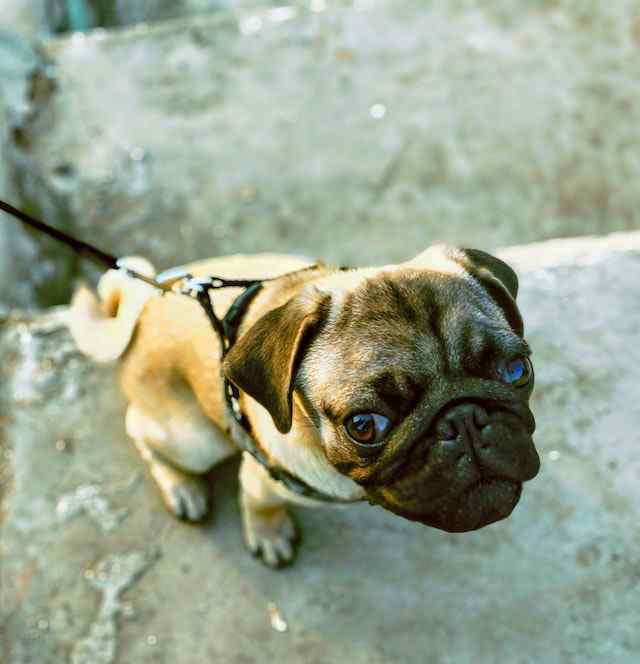
Potty training a Pug may take some time and patience, but with consistent effort, it can be successfully achieved. Here is the step-by-step process of potty training a Pug:
1. Create a Routine:
It is important to establish a routine for your Pug right from the start. Take them out for potty breaks at regular intervals, such as immediately after waking up, after meals, and before bedtime.
2. Choose a Potty Spot:
Designate a specific potty spot outside where you want your Pug to go. This area should ideally be away from their play and eating areas.
3. Reward Your Pug:
Every time your Pug goes potty at their designated spot, give them a treat and lots of praise to reinforce good behavior.
4. Take Them Out Often:
During the initial stages of potty training, take your Pug out frequently to their potty spot to prevent accidents inside the house.
5. Be Consistent:
Use the same command or phrase every time you take your Pug out to their potty spot. This will help them associate the command with the behavior.
6. Supervision:
Supervise your Pug indoors to prevent them from having accidents. When you can’t supervise, crate training can help.
7. Clean Accidents Properly:
If your Pug has an accident inside the house, clean it up thoroughly with an enzymatic cleaner to eliminate any lingering odor.
8. Maintain Training:
Continue with the routine and consistent training, and gradually reduce the frequency of taking your Pug out for potty breaks as they become more reliable.
4. Leash training a Pug

Leash training a Pug is an important part of their overall training as it ensures that they can walk safely and calmly outside without pulling on their leash or becoming reactive. Here is a step-by-step guide for leash training a Pug:
- Get the right equipment: Leash training a Pug requires the right equipment, including a collar or harness that fits well and a standard leash that is 4-6 feet long.
- Introduce the collar and leash: Allow your Pug to get used to wearing the collar or harness and attach the leash. Let them try walking with it on for short periods indoors at first.
- Practice in a low distraction area: Start in a quiet area without a lot of distractions like a backyard or an empty area of a park. Keep your Pug close to you and reward them with a treat for walking by your side.
- Use verbal cues: Use a verbal cue like “let’s go” to lead your Pug when using the leash. As you walk, use treats to reward your Pug when they follow and stay close by your side.
- Increase the duration of training: As your Pug gets more comfortable with walking on a leash, you can gradually increase the duration and intensity of your walks, making sure to praise and treat them for good behavior.
- Practice loose leash walking: Teach your Pug to walk on a loose leash. To start this training, use a treat to lure your Pug just in front of you and walk at your pace. Gradually extend the amount of time your Pug walks in front of you, but always reward them for staying close and not pulling on their leash.
With consistent practice and rewards, leash training a Pug can be a fun and rewarding process, resulting in a more enjoyable walking experience for both you and your furry friend.
5. Crate training a Pug
The following steps can be followed to crate-train a pug:
- Introduce the Crate: Introduce your pug to the crate by placing it in a central location in your home where your pug can see it.
- Make it Inviting: Make the crate inviting by placing comfortable bedding, toys, and treats inside.
- Encourage Your Pug to Explore: Encourage your pug to explore the crate by placing a treat inside. Allow your pug to sniff around and enter the crate at their own pace.
- Feeding in the Crate: Start feeding your pug in the crate to associate it with positive experiences. Start by placing your pug’s food bowl near the entrance of the crate and gradually move it toward the back of the crate.
- Increase the Time: Begin increasing the time your pug spends in the crate, starting with a few seconds and gradually increasing the duration. Start with short periods and gradually increase the duration as your pug becomes more comfortable.
- Reduce Vocal Prompts: Reduce vocal prompts such as calling your pug’s name or coaxing them to enter the crate. Your pug should begin to enter the crate on their own.
- Stay Calm: Stay calm and refrain from forcing your pug into the crate. Allow your pug to enter the crate voluntarily.
- Create a Schedule: Create a schedule for your pug’s time in the crate, making sure to provide adequate potty breaks and exercise.
- Praise Your Pug: Praise your pug for entering the crate on their own and spending time in it.
By following these steps, you can effectively crate train your pug and provide them with a safe and secure space that they will love and feel comfortable in.
6. Socialization training for Pugs
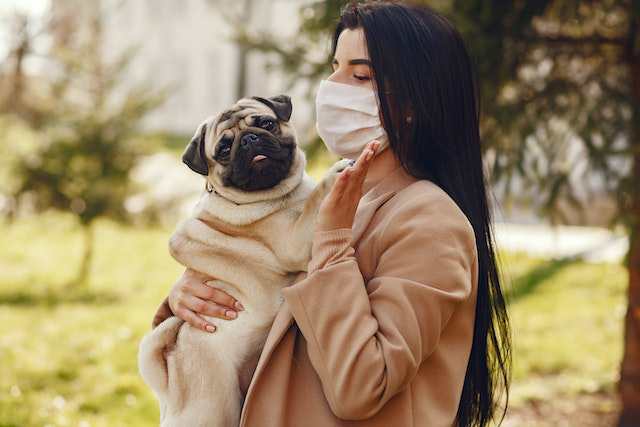
Socialization is crucial for a pug’s overall development and to help prevent behavioral issues. Here are the steps to take for effective socialization training for your pug:
Step 1: Begin early – Start socializing your pug as soon as possible, ideally before they reach 14 weeks of age.
Step 2: Start small – Introduce your pug to one person or one dog at a time to avoid overwhelming them.
Step 3: Watch for signs of discomfort – Pay attention to your pug’s body language. If they are displaying signs of fear or discomfort, take a step back and try again later.
Step 4: Expose your pug to different environments – Take your pug to different places, such as parks and pet stores, to help them become comfortable in new environments.
Step 5: Use positive reinforcement – Reward your pug with treats, toys, and praise when they display good behavior.
Step 6: Train basic commands – Teach your pug basic commands such as “sit,” “stay,” and “come” to help them stay calm and focused during socialization exercises.
Remember, socialization is an ongoing process. Continue to expose your pug to different people, dogs, and environments regularly throughout their life to ensure they remain well-socialized.
7. Positive reinforcement training for Pug
Positive reinforcement training is a training technique that rewards good behavior rather than punishing bad behavior. Here is the step-by-step process of positive reinforcement training a pug:
Step 1: Identify the desired behavior
Identify the behavior you want your pug to exhibit. For example, sitting or lying down when asked.
Step 2: Select the reward
Select a reward that your pug likes and will be motivated to work for, such as treats, a toy, or verbal praise.
Step 3: Mark the desired behavior
Use a clicker or a command to mark the desired behavior as soon as your pug performs it. This is to let your pug know that that behavior is what you are rewarding them for.
Step 4: Reward the desired behavior
Provide the reward immediately after marking the desired behavior. Consistency is key, so be sure to follow these steps every time your pug performs the desired behavior.
Step 5: Add a verbal cue
Once your pug consistently performs the desired behavior, add a verbal cue such as ‘sit’ or ‘down’ so that they can associate the behavior with the command.
Step 6: Gradually decrease rewards
As your pug becomes more experienced and consistent with the desired behavior, gradually decrease the rewards until verbal praise becomes the main reinforcement.
Remember, positive reinforcement training is a gradual process, and patience and consistency are key to success.
Learn more about dog training mistakes you should know.
8. Daily routine training for Pugs
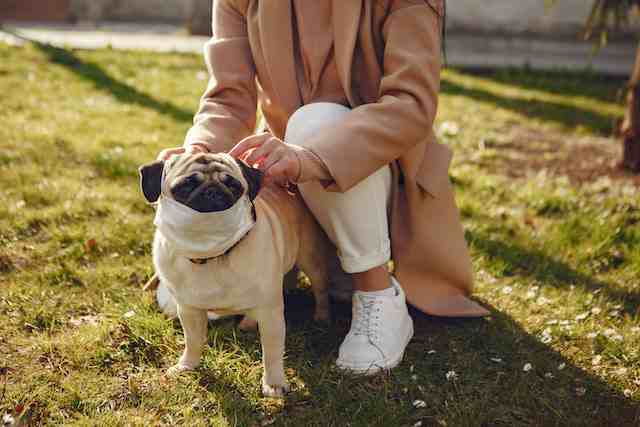
Pugs are playful and loving dogs that require regular exercise and grooming to stay healthy and happy. Here are some tips for a daily routine for pugs:
- Exercise: Pugs need at least two walks per day, lasting a minimum of 20 minutes and up to 45 minutes or longer. Regular exercise helps pugs maintain a healthy weight and keep their mental and physical health in good shape.
- Grooming: Daily grooming is essential for pugs because of their double coat which keeps shedding continuously. Brush your pug at least twice a week to get rid of excess fur and keep their coat shiny and healthy. You should also clean their wrinkles and ears to prevent infections.
- Feeding: It’s recommended to feed your pug twice a day with high-quality dog food that meets their nutritional needs. Avoid overfeeding, as pugs are prone to obesity.
- Playtime: Pugs love to play and interact with their owners; make sure you spend some time every day playing with your pug and keeping them engaged.
- Rest: Pugs love to sleep and need plenty of rest to maintain their health. Provide them with a comfortable and cozy bed and plenty of opportunities for naps throughout the day.
Overall, a daily routine that includes exercise, grooming, feeding, playtime, and rest is essential for keeping your pug happy and healthy.
Learn more about interesting pug behavior and behavior problems.
Tips for Training an Older Pug
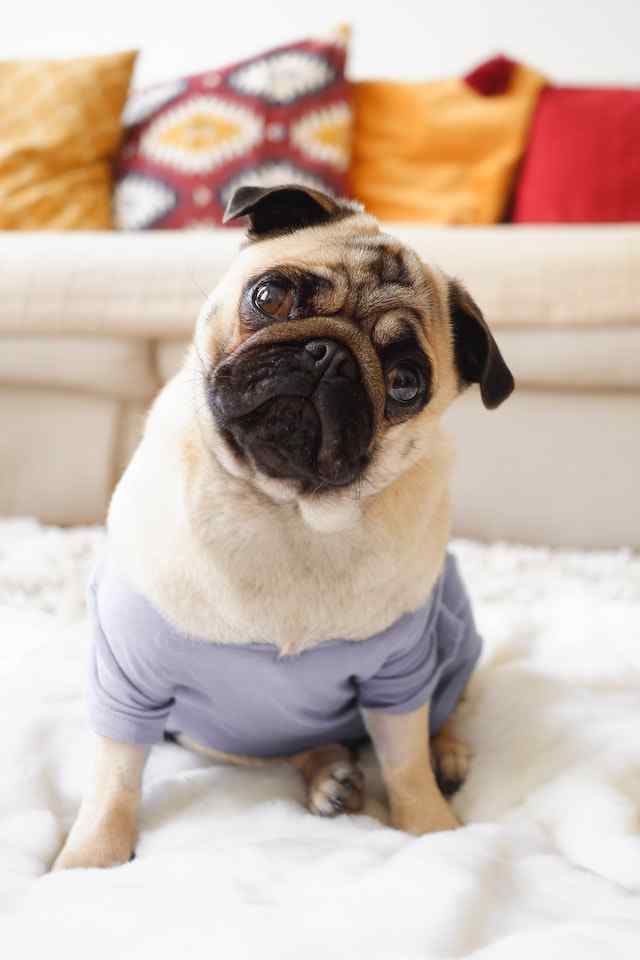
Training an older Pug can be challenging, but it is definitely possible with patience and a consistent approach.
Here are some tips for training older Pugs:
1. Establish a routine
Just like with puppies, establishing a routine is important for older Pugs. This includes feeding meals at regular times and setting aside specific times for training and exercise. A consistent routine helps your Pug know what to expect and when.
2. Use positive reinforcement
Pugs respond well to positive reinforcement, so be sure to reward them with treats, praise, and affection when they behave well. This helps to reinforce good behavior and makes your Pug more receptive to future training.
3. Keep training sessions short
Older Pugs may have a shorter attention span, so it’s important to keep training sessions short and focused. Aim for 5-10 minutes per session and try to incorporate training into your daily routine.
4. Exercise regularly
Exercise is important for all dogs, including older Pugs. Regular exercise helps to keep them healthy and happy, and can also help to improve their behavior. Try taking your Pug for a walk or playing with them for at least 20-30 minutes each day.
5. Be patient
Training an older Pug can take time and patience, so don’t get discouraged if progress is slow. Stay consistent and positive in your approach, and remember to reward good behavior whenever you can.
Related Questions
When is the best time to start training a pug puppy?
It is best to start training a pug puppy as early as 7–9 weeks old. This will help establish good habits and manners early on so that they can grow into well-behaved dogs.
How can I teach my pug to stop barking excessively?
Excessive barking is a common issue with pugs. To address this behavior, you can try redirecting their attention, using positive reinforcement, or seeking help from a professional dog trainer.
How often should I train my pug?
It is best to train your pug in short and frequent sessions, ideally 10–15 minutes twice a day. Always end on a positive note and avoid overtraining, which can lead to frustration and burnout for both you and your pug.
What are some common mistakes to avoid during pug training?
One common mistake to avoid is punishment-based training, which can be counterproductive and lead to fear or aggression in your pug. Instead, focus on positive reinforcement, consistency, and patience to help your pug develop good habits and manners. Also, be sure to avoid overfeeding your pug with treats during training, which can lead to weight gain and other health issues.
Learn more about interesting pug temperament and traits.
Conclusion
In conclusion, pug training doesn’t have to be a stressful experience for you and your four-legged friend!
With consistency, positive reinforcement, and plenty of patience, your pug can learn new tricks and behaviors that will make both your lives easier.
So, whether you’re looking to teach basic obedience or fun tricks, remember to always approach training with love and enthusiasm. Happy training!
